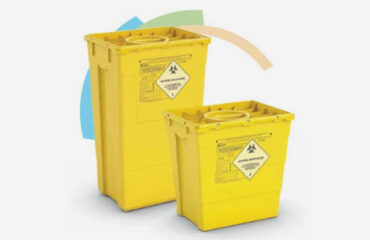Reclaim Waste Fundamentals Explained
Reclaim Waste Fundamentals Explained
Blog Article
Reclaim Waste Can Be Fun For Everyone
Table of ContentsReclaim Waste Fundamentals ExplainedThe Ultimate Guide To Reclaim WasteWhat Does Reclaim Waste Mean?Getting The Reclaim Waste To WorkSome Known Details About Reclaim Waste
Domestic sewage waste refers to the waste and products from a property septic container. The proper management and disposal of residential sewage waste need liquid waste to be moved to a sewer therapy plant where the proper methods and tools are used to purify and dispose of waste.
Industrial waste typically consists of prospective risks, such as flammable products or a combination of liquid and strong waste items, and calls for an advanced and in-depth disposal process. The disposal of business waste typically involves the filtering of waste prior to transport to make sure safe and correct disposal. Industrial waste is produced from results and overflow of industrial processes and production.
This type of waste can not use the very same sewer monitoring transportation or procedures as septic or business fluids. The commercial waste management procedure calls for the assessment and testing of fluid waste before it goes through the disposal procedure (liquid waste disposal melbourne). Drainage waste is the liquid waste that comes from drainage and excess stormwater in extremely booming areas or cities
Drainage waste can trigger contamination and flooding if not handled properly. Making certain correct waste management can protect against catastrophes and minimize ecological damage.
Some Known Factual Statements About Reclaim Waste
Contact PROS Solutions today to find out about our waste monitoring and disposal services and the correct ways to take care of the fluid waste you create.
(https://moz.com/community/q/user/reclaimwaste1)Do you know what happens to your water when you end, flush the bathroom or drain the cleaning maker? No? Well, it's worth understanding. This so-called 'wastewater' is not only a vital source but, after treatment, will certainly be launched to our land, rivers or the ocean. Utilized water from toilets, showers, bathrooms, kitchen area sinks, washings and commercial processes is referred to as wastewater.

water made use of to cool machinery or clean plant and his comment is here devices). Stormwater, a form of wastewater, is runoff that flows from agricultural and city locations such as roofings, parks, yards, roads, paths and gutters right into stormwater drains, after rain. Stormwater flows unattended directly to local creeks or rivers, eventually reaching the sea.
Some Ideas on Reclaim Waste You Need To Know
In Queensland, the majority of wastewater is dealt with at sewage therapy plants. Wastewater is delivered from residential or industrial sites via a system of drains and pump stations, recognized as sewage reticulation, to a sewage treatment plant. City governments build, keep and operate most sewer treatment plants. Operators are accredited under the Environmental Protection Act 1994 to discharge treated wastewater at an appropriate ecological criterion right into waterways.
The Department of Natural Resources suggests city governments concerning managing, operating and keeping sewerage systems and therapy plants. In unsewered areas, city governments may need homeowners to install individual or house sewer therapy systems to deal with residential wastewater from bathrooms, cooking areas, washrooms and washings. The Department of Natural Resources authorises the use of house systems when they are shown to be effective.
In some new class, therapy of some stormwater to get rid of litter, sand and gravel has actually begun using gross toxin catches. Wastewater treatment happens in four phases: Eliminates solid issue.
Wastewater after that moves into large storage tanks where solids work out and are removed as sludge. Oil and residue are skimmed from the surface area. Uses small living microorganisms referred to as micro-organisms to damage down and eliminate staying liquified wastes and great particles. Micro-organisms and wastes are included in the sludge. Removes nitrogen and phosphorus nutrients that can create algal flowers in our waterways and endanger marine life.
Some Of Reclaim Waste
Nutrient removal is not available at all sewage treatment plants because it needs expensive specialized equipment. It is ending up being much more common in Queensland. Clear fluid effluent generated after therapy might still have disease-causing micro-organisms. If this effluent is launched right into waterways such as rivers or the sea, the micro-organisms will eventually pass away out.

Many wastewater flows into the sewage system. Under the Act, local federal governments administer authorizations and licences for eco appropriate tasks (ERAs) involving wastewater launches that might have a neighborhood impact.
The Ultimate Guide To Reclaim Waste
Otherwise, samples are taken for laboratory analysis. Usually several examinations are required to establish the levels of each of the different contaminants such as oils, hefty metals and chemicals in water. Surveillance provides factual info about water quality and can verify that permit conditions are being fulfilled. The info obtained with monitoring offers the basis for making water quality decisions.
Report this page